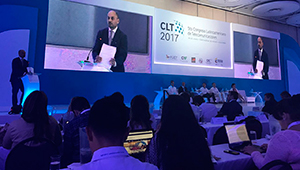 “Digitising production, particularly of SMEs, will be essential in enabling the region to generate a leap in productivity and enter the digital economy beyond consumption,” said Sebastián Cabello, Head of GSMA Latin America, during the opening speech at Latin American Telecommunications Congress 2017. More than 500 digital ecosystem leaders and experts representing 30 countries were in Cartagena for the regional meeting, which was attended by ministers and the highest ranking government authorities from the ICT sector in Argentina, Brazil, Chile, Colombia, Mexico and Costa Rica.
“Digitising production, particularly of SMEs, will be essential in enabling the region to generate a leap in productivity and enter the digital economy beyond consumption,” said Sebastián Cabello, Head of GSMA Latin America, during the opening speech at Latin American Telecommunications Congress 2017. More than 500 digital ecosystem leaders and experts representing 30 countries were in Cartagena for the regional meeting, which was attended by ministers and the highest ranking government authorities from the ICT sector in Argentina, Brazil, Chile, Colombia, Mexico and Costa Rica.
Also speaking at the opening of the event, Colombia’s Minister of Information and Communications Technology (ICT), David Luna, announced the progress made in the Strategy for the Digital Economy. “We connected the country and now we’re leading it towards a digital economy. 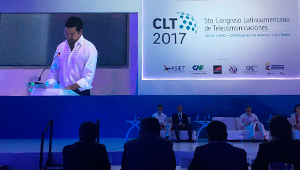 We aim to democratise access to emerging digital technologies so we can transform production and creation processes in every sector,” he said. Mr Luna highlighted the progress of the Digital Economy Observatory, which measures the level of digitisation of the main economic subsectors in the primary (agriculture, mining and hydrocarbons), secondary (manufacturing and industry) and tertiary (services) sectors of the economy.
We aim to democratise access to emerging digital technologies so we can transform production and creation processes in every sector,” he said. Mr Luna highlighted the progress of the Digital Economy Observatory, which measures the level of digitisation of the main economic subsectors in the primary (agriculture, mining and hydrocarbons), secondary (manufacturing and industry) and tertiary (services) sectors of the economy.
CLT17 was held during four intense days of conferences, seminars and meetings, including a discussion on how the mobile industry is contributing to the United Nations Sustainable Development Goals and the workshop “Redefining regulatory frameworks for digital inclusion”.
ICT to support Sustainable Development Goals #ICT4SDG
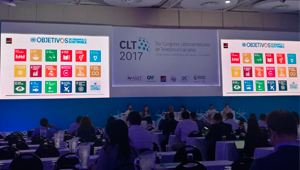 “How can the Sustainable Development Goals be effectively implemented in the region?” was one of the key panels of the CLT17 plenary session, moderated by Ana Blanco, Industry Purpose Campaign Strategist, GSMA. Daniel Quintero, Vice Minister of Information Technologies, Colombian Ministry of Information and Communications Technology (MinTIC), said “The ICT sector has the necessary tools to solve Latin America’s social problems”. Mr Quintero added that the Colombian peace process had made it possible to install telecommunications infrastructure and Wi-Fi points, enhance connectivity and deliver computers to people in conflict zones, contributing to greater social inclusion through online health, education, justice and government services.
“How can the Sustainable Development Goals be effectively implemented in the region?” was one of the key panels of the CLT17 plenary session, moderated by Ana Blanco, Industry Purpose Campaign Strategist, GSMA. Daniel Quintero, Vice Minister of Information Technologies, Colombian Ministry of Information and Communications Technology (MinTIC), said “The ICT sector has the necessary tools to solve Latin America’s social problems”. Mr Quintero added that the Colombian peace process had made it possible to install telecommunications infrastructure and Wi-Fi points, enhance connectivity and deliver computers to people in conflict zones, contributing to greater social inclusion through online health, education, justice and government services.
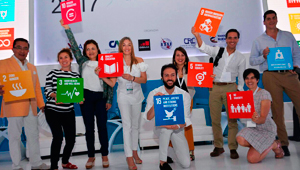 “The mobile sector can positively influence all the SDGs and technology is a lever for achieving the goals,” said Alfonso Gómez Palacio, President of Telefónica Colombia, during the panel, in which the other participants were Ana Lucía Lenis, Senior Manager Government Affairs & Public Policy Andean & Central Region, Google; Martha Castellanos, Manager of the Education Plan 2016-2025, Ministry of Education, Colombia; and Suzy Sierra Ruiz, Board Member of Colombia’s National Television Authority (ANTV).
“The mobile sector can positively influence all the SDGs and technology is a lever for achieving the goals,” said Alfonso Gómez Palacio, President of Telefónica Colombia, during the panel, in which the other participants were Ana Lucía Lenis, Senior Manager Government Affairs & Public Policy Andean & Central Region, Google; Martha Castellanos, Manager of the Education Plan 2016-2025, Ministry of Education, Colombia; and Suzy Sierra Ruiz, Board Member of Colombia’s National Television Authority (ANTV).
Redefining regulatory frameworks for digital inclusion
Adapting regulatory frameworks to convergence, removing barriers to infrastructure installation and delivering tax reforms to reduce the digital divide were the topics of the GSMA seminar “Redefining regulatory frameworks for digital inclusion” at CLT17.
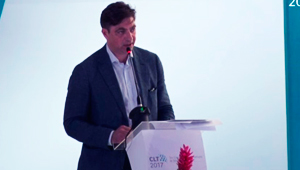 Serafino Abate, Director of Competition Economics, GSMA, said that the digital ecosystem requires regulation to be modified and updated, based on service functionality and market dynamism. Convergence, combined with heavy investment in capital, network quality and services, and more efficient use of spectrum are the factors obliging countries to update regulations in the bid to demolish the digital divide.
Serafino Abate, Director of Competition Economics, GSMA, said that the digital ecosystem requires regulation to be modified and updated, based on service functionality and market dynamism. Convergence, combined with heavy investment in capital, network quality and services, and more efficient use of spectrum are the factors obliging countries to update regulations in the bid to demolish the digital divide.
Closing the divide requires regulatory frameworks that encourage investment, according to Genaro Cruz, Regulatory Specialist, Infrastructure Economics, GSMA. “Delivering 3G technologies to the 10 per cent of the population that’s still unconnected (in areas with difficult access) requires enormous investments, but there are no economic incentives to make such investments,” he explained. However, Mr Cruz noted that strengthening infrastructure is the first step towards digital inclusion.
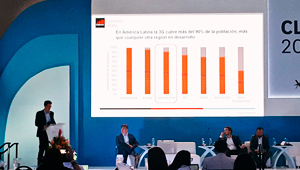 Pau Castells, Lead Economist, GSMA, said that of the taxes, fees and tax levies on the sector, VAT is the highest charge on mobile services and devices. Moreover, sector-specific taxes on consumption are additional to VAT, accounting for a large part of the cost of the service, and do not comply with the good practices laid down, for example, by the Organisation for Economic Cooperation and Development (OECD). “Affordability of telecommunications services is a barrier to connecting the unconnected,” he said.
Pau Castells, Lead Economist, GSMA, said that of the taxes, fees and tax levies on the sector, VAT is the highest charge on mobile services and devices. Moreover, sector-specific taxes on consumption are additional to VAT, accounting for a large part of the cost of the service, and do not comply with the good practices laid down, for example, by the Organisation for Economic Cooperation and Development (OECD). “Affordability of telecommunications services is a barrier to connecting the unconnected,” he said.
Resources
- Press release: The key meeting of the regional digital ecosystem
- Summary article: The players of the Latin American digital ecosystem highlight the need for public policies that promote development of the digital economy
- Video
- Opening speech: Sebastián Cabello, Director Regional de la GSMA para América Latina
- Opening speech: David Luna, Ministro de TICs da Colômbia
- Opinion article: ‘Role of the State in the Digital Economy’ discussed at CLT
- Summary article: Investments and telecommunications networks sustain Latin America’s digital economy
- Video
- Opinion article: Digitisation, employment and education: the foundations of Latin America’s growth
- Summary article: Public policy and regulatory seminars explain how to close the digital divide and leverage ICT for education
- Video
- Image gallery – Day 1
- Image gallery – Day 2
- Image gallery – Day 3
- Presentations
CLT17 Day one – Opening of the plenary session and CRC Workshop
CLT17 Day 2 – Plenary Session
CLT17 Day 3 – SCT, CAF and GSMA Seminars and start of CPR Latam